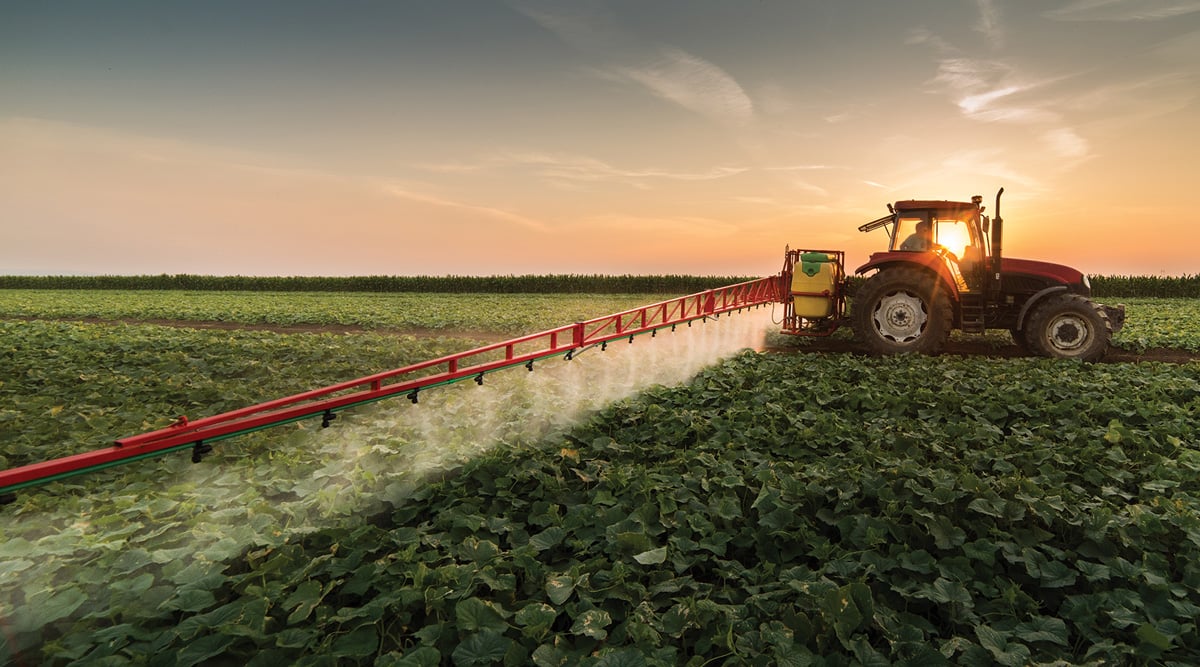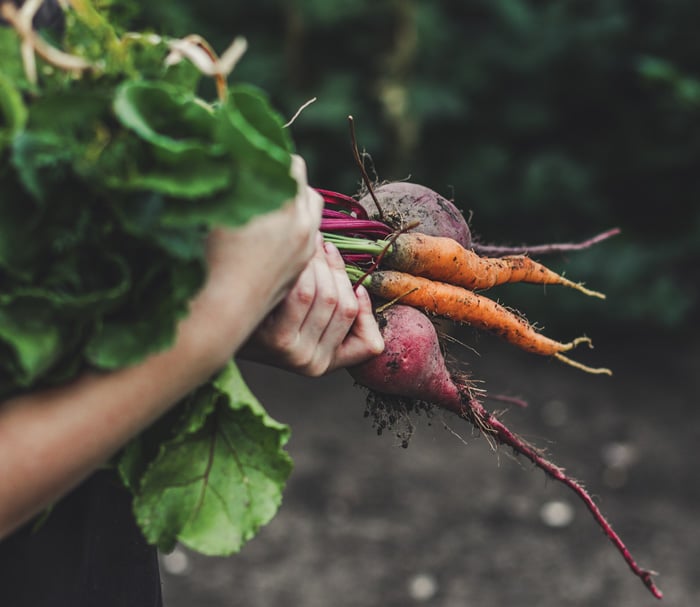Alternatives to Conventional Pesticides
FOOD SAFETY AND QUALITY
Agricultural pesticides are collaboratively regulated by the U.S. Food and Drug Administration (FDA), the U.S. Department of Agriculture (USDA), and the U.S. Environmental Protection Agency (EPA). The EPA utilizes peer-reviewed literature and human consumption patterns determined by the Total Dietary Study to establish tolerances for pesticides. The FDA monitors and enforces those tolerances by testing residue amounts of more than 700 pesticides in human food and animal food. And the USDA provides organic standards through its National Organic Program (NOP), information on organic certification, and lists of allowed and prohibited pesticides. Consumers have shown increased interest in agricultural practices—especially regarding the environmental stewardship and safety for themselves, their children, and their pets as well as farm workers.
Pesticide Education
The National Pesticide Information Center (NPIC) is the result of a cooperative agreement between Oregon State University and the EPA. Its staff members provide objective science-based information about pesticides and related topics to help people make informed decisions on pesticide use and safe practices. Much more than a telephone hotline, the NPIC provides information on its website and on major social media outlets such as Facebook, Twitter, and YouTube. Kaci Buhl, assistant director of the NPIC, describes the center’s content as being “put in the path of the consumer.” The NPIC’s use of colorful and amusing infographics provides helpful, data-driven information in a fun and easy-to-read format. The dedicated staff are a go-to source for consumer concerns. Eighty-five percent of consumer inquiries involve the use of pesticides on food and the health risks associated with pesticides. The most common consumer concern is understanding the difference between organic versus conventionally raised foods. Consumers are also concerned about the safety of food grown in home gardens, the use of store-bought pesticides in home gardens, and potential cross-contamination from pesticide use in neighboring gardens or farms. Due to consumers’ overwhelming interest in organic foods, sustainable agricultural practices and food transparency, the NPIC has a section devoted to biopesticides, minimum risk pesticides, and organic pesticides. Information on preharvest pest-deterring alternatives can also assist food producers who want to make their farm-to-fork operations more environmentally friendly.
Biopesticides
Biopesticides are living things or compounds derived from living things that deter pests (NPIC 2020). Many of these pest deterrents are naturally found in the environment. Biopesticides can be microbial organisms such as bacteria and fungi. One example is Bacillus thuringiensis (Bt), which produces proteins that are toxic to immature insects or larvae. Because these toxic proteins act specifically on certain larvae, they pose minimal risk to humans and other animals. Bacteria and fungi used as biopesticides are often target-specific, so they can be used to control specific weeds or insect pests. Plant-derived substances such as corn gluten, black pepper, and garlic compounds can be used as biopesticides to control insects. Other types of biopesticides are naturally occurring insect hormones—which can repel bugs, disrupt their mating habits, or stunt their growth—and synthetic substances that have the same molecular formulas and use the same modes of action as their natural counterparts. Genetically modified plants are also considered forms of biopesticides because they have been engineered with pest-deterring genes and proteins from natural sources. For example, Bt genes have been transferred into some crops, which protects them from marauding insects without the need for additional inputs.
Compared to conventional chemical pesticides, biopesticides tend to pose fewer safety risks, can be effective in small quantities, and degrade quickly. This means that they don’t have long-term effects on the environment and are less likely to accumulate in the bodies of farmers and consumers. Because they have a narrow target scope and lack persistence, biopesticides are less impactful than conventional pesticides. In addition, biopesticides can reduce the use of conventional pesticides when used as part of an integrated pest management system. The use of biopesticides is expected to outgrow the use of conventional pesticides in the coming years. In 2017 the global biopesticides market was $3.36 billion and is expected to top $10 billion by 2025 (Anonymous 2019).
Established in 1994, the Biopesticides and Pollution Prevention Division in the Office of Pesticide Programs at the EPA facilitates the registration of biopesticides (EPA 2016). The EPA conducts rigorous reviews to guarantee the safety and minimal impact of pesticides to human health, animal health, and the environment. Since biopesticides are usually less toxic than conventional treatments, they tend to require less data and less time for approval (EPA 2016). Presently, there are more than 1,400 active registrations of biopesticide products. A list of their active ingredients is on the EPA’s website.
Minimum Risk Pesticides
The EPA defines minimum risk pesticides as products that are exempt from the Federal Insecticide, Fungicide, and Rodenticide Act. These active and inert ingredients are listed under the minimum risk exemption regulations in the Code of Federal Regulations (CFR). The identification and standardization of minimum risks pesticides is enhanced by inclusion of Chemical Abstracts Service numbers for each (EPA 2015). To be categorized as a minimum risk pesticide, the following six conditions must be met (EPA 2019):
1. The product’s active ingredients must be only those listed in 40 CFR 152.25(f)(1).
2. Any other ingredients, including inert ones, must also be on this list.
3. All of the ingredients, both active and inert, must be listed on the label.
4. The product cannot claim to control pests that affect human health.
5. The name of the producer and the company’s contact information must be displayed prominently on the label.
6. The label cannot include any false or misleading statements.
Certain food-grade oils are also eligible to be minimum risk pesticide products. Castor, cinnamon, clove, corn, cottonseed, garlic, linseed, peppermint, rosemary, soybean, spearmint, and thyme oils fall into this category. Eligible food-grade spices are cinnamon, cloves, cornmint, peppermint, rosemary, spearmint, thyme, and white pepper. Citric acid, corn gluten meal, lauryl sulfate, potassium sorbate, putrescent whole egg solids, sesame, ground sesame plant, sodium chloride, and sodium laurel sulfate are also food-grade chemicals and by-products that pose minimum risks. Despite being natural, these products should still be considered toxic and used with care as many plant oils are harmful to the skin and eyes and some may cause severe reactions.
Organic Pesticides
While many believe that organic foods are always pesticide-free, that is not true; organic crops are just as vulnerable to pest problems as conventional crops are. So when necessary, farmers rely on organic pesticides, which are usually made from naturally occurring substances but not always. The USDA’s National List of Allowed and Prohibited Substances outlines which natural and synthetic substances are allowed as organic pesticides. Among this list are various soaps, hydrogen peroxide, sodium hypochlorite (chlorine bleach), diatomaceous earth, pyrethrins, and iron sulfate. Like conventional pesticides, organic pesticides can be quite toxic even if they are natural substances; for example, arsenic, strychnine, and nicotine are toxic natural compounds (these are not used as pesticides). Furthermore, organic pesticides can pose problems for bees, butterflies, and other crop pollinators and beneficial insects.
The Xerces Society is committed to protecting insect species that benefit crops and other plants and provides an overview of common organic pesticides with toxicity ratings and special precautions (Xerces Society 2019). The minimal risk pesticides food-grade oils and corn gluten have a low to medium impact on beneficial insects. Acetic acid concentrations above 10% are toxic to bees and other beneficial insects. The Xerces Society recommends applying organic pesticides at night to reduce exposure to beneficial insects, which are mostly active during the day. The organization also suggests low usage rates, rotating different substances, and combining low dosages for a hurdle effect. It is important to note that biopesticides are only minimally impactful if they are used thoughtfully.
According to Michelle Wright, an independent food regulation and food labeling consultant, of the three classifications of natural and biological pesticides listed on the NPIC’s website, organic certification is the only route to making organic pesticide claims. Outside of organic certification, it is difficult to achieve the traceability that is needed for most alternative pesticide claims because commodity food ingredients are mixed during processing, storage, and transportation. In the future, consumers may demand more preharvest transparency and manufacturers may want to make alternative pesticide marketing claims. Therefore, preharvest supply chain traceability and accountability should continue to improve, mimicking advances in postharvest traceability.
There are many alternatives to conventional pesticides available to food producers and consumers. Helpful information on pesticide use and alternatives to conventional pesticides is readily available to counteract and supplant misinformation. Besides the NPIC’s website, food producers and consumers can consult the USDA’s NOP, the Organic Trade Association, and other web-based resources for sound information.
REFERENCES
Anonymous. 2019. “Agriculture/Biopesticides Market.” Fortune Business Insights April. https://www.fortunebusinessinsights.com/industry-reports/biopesticides-market-100073.
EPA. 2015. “Active Ingredients Eligible for Minimum Risk Pesticide Products.” https://www.epa.gov/sites/production/files/2015-12/documents/minrisk-active-
ingredients-tolerances-2015-12-15.pdf.
EPA. 2016. “What Are Biopesticides?” https://www.epa.gov/ingredients-used-pesticide-products/what-are-biopesticides.
EPA. 2019. “Conditions for Minimum Risk Pesticides.” https://www.epa.gov/minimum-risk-pesticides/conditions-minimum-risk-pesticides.
NPIC. 2020. “Natural and Biological Pesticides.” http://npic.orst.edu/ingred/ptype/natbio.html.
USDA. 2019. “The National List.” https://www.ams.usda.gov/rules-regulations/organic/national-list.
Xerces Society. 2019. “Comparative Overview: Organic Pesticides.” https://xerces.org/sites/default/files/2019-09/19-005_01_Organic-Approved-Pesticides_Overview-FS_web.pdf.




